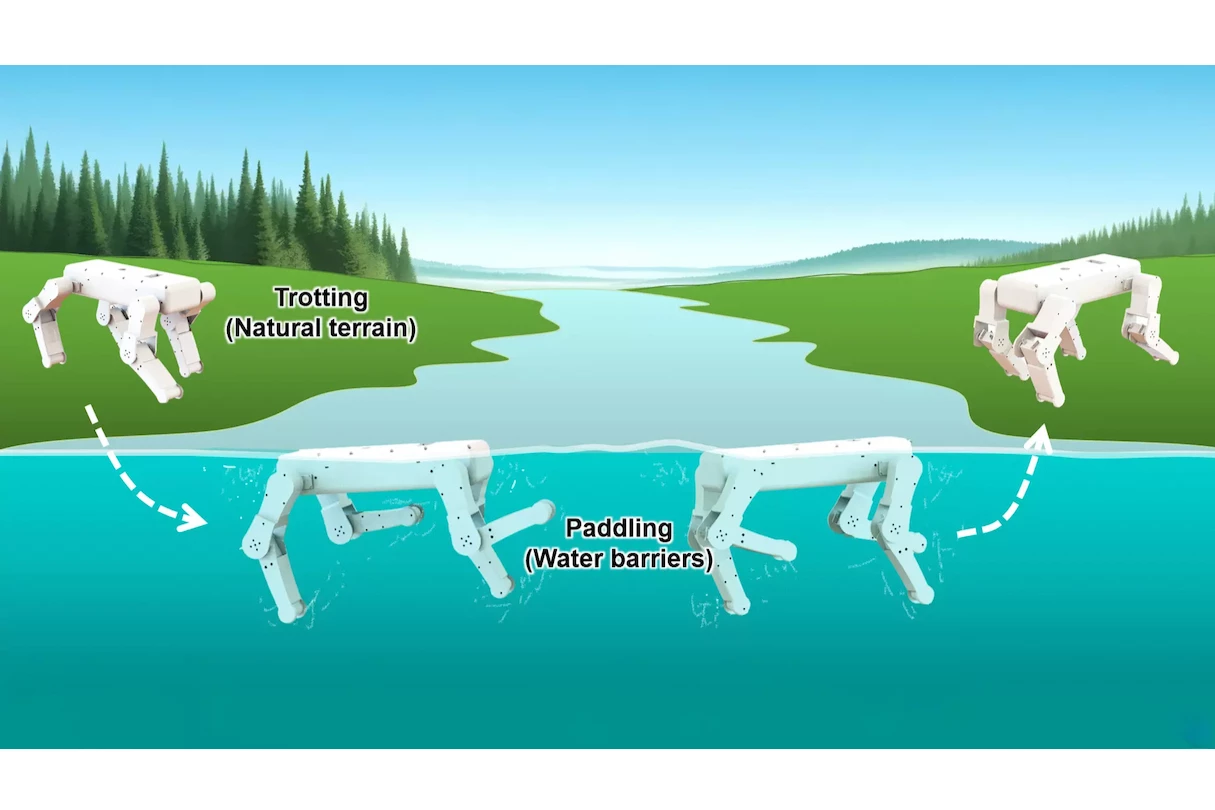Quadruped "robot dogs" may move quite a bit like their canine counterparts on land, but they're not nearly as good at swimming (although some can walk underwater). Such is not the case with a new mini-dog-bot, however, which is an expert at doing the dog-paddle.
Known appropriately enough as the Amphibious Robot Dog (ARD), the four-legged device measures 300 mm long by 100 mm wide (11.8 by 3.9 in) and tips the scales at 2.25 kg (5 lb). It was created by a team of scientists led by professors Yunquan Li and Ye Chen from the South China University of Technology.
On land, the robot's double-jointed legs adopt a trotting gait, taking it to a top speed of 1.2 BL/s (body-lengths per second). Swimming in the water, it still manages a decent 0.54 BL/s. For comparison, previous research indicates that actual pooches top out at about 1.4 BL/s when dog-paddling.

Importantly, ARD wasn't just built to be a waterproof, floating quadruped. The scientists made a point of balancing its center of gravity and center of buoyancy, in order to "ensure stable and effective aquatic performance." They also experimented with three different swimming styles.
Two of these, called "lateral sequence paddling gaits" (LSPGs), were essentially variations on the dog-paddle. As the name suggests, they involved moving the four legs in a lateral sequence/cycle – left-front then left-rear, followed by right-front then right-rear.
The difference between the two LSPG gaits lay in what proportion of the cycle each leg spent in the "power phase" (PP), in which it was fully extended for maximum thrust. In one gait, each leg moved completely on its own, for a PP proportion of 25%. In the other – which was more like the natural dog-paddle – there was some overlap between leg movements, for a PP proportion of 33%
The third swimming style was a "trot-like paddling gait" (TLPG) in which diagonally-opposed pairs of legs moved at the same time – left-front/right-rear, then right-front/left-rear – for a 50% PP proportion.
Pool tests showed that the 33% LSPG delivered the fastest swimming speed of 0.54 BL/s, followed closely by the 25% LSPG. The TLPG was the slowest of the three, but it was also the most stable.
"This innovation marks a big step forward in designing nature-inspired robots," says Prof. Li. "Our robot dog’s ability to efficiently move through water and on land is due to its bioinspired trajectory planning, which mimics the natural paddling gait of real dogs."
A paper on the research was recently published in the journal Bioinspiration & Biomimetics.
Source: IOP Publishing




